After the triumphs and tribulations of the previous couple of days, it was with an air of excitement and a surprising cold floor that we awoke and prepared ourselves for the uber exciting day ahead.
Such was our excitement (and concern about sleeping in) that we had prepacked our backpacks and laid out our clothes the night before
. This meant there was very little to do other than get dressed, try to make ourselves look semi decent at 5:45 in the morning and shove all our other luggage into our other bag.
We had a very quick breakfast and cup of coca tea before joining the others in the hotel foyer and meeting our guide. Having left our luggage with the hotel for storage, we walked towards where the queue for the buses was – there are two ways to get the Machu Picchu from Aguas Calientes catch a bus which takes about 20 minutes or walk up a series of steep-ish steps that would take about 1.5hrs to walk. With this in mind, most people opt for the bus.
The buses leave from what I guess could be considered to be the town's main street. Our travel guide had warned us about the queue and I had read about it on the internet, but I wasn’t really prepared for its length. Given it was only 6:30 in the morning, it was a little bit of shock to see it extending for at least 500m (due to the smallness of the village, it looked like it extended most of the main street)
. I figured the ruins weren’t going anywhere, the queue was moving at a slow yet steady pace, more people were joining the line behind us and first train from Cusco wasn’t sue for quite awhile, so I was happy to soak up the scenery of Aguas Calientes.
Aguas Calientes is a very pretty town, especially when the peaks of the surrounding mountains are covered in mist or low lying cloud. The town was previously known as Machu Picchu Pueblo and is the launching point for visitors to Machu Picchu who want to get to the ruins early in the day – the first bus leaves at something 5:30am so that people can get to the ruins in time for the sunrise. It has also become a popular destination for people wanting to visit the volcanic hot springs that are located nearby, although going to Machu Picchu is still the key reason people visit.
After about 90 minutes in the bus queue it was out turn to get on a bus – the wait in which wasn’t too bad as there are a couple of cafes and trinket shops that make good use of the queue to show off their wares. The buses that make the journey up the mountain only carry about 30 people and throughout the day the drivers go up and down the mountain several times, this could explain why they appear to be a bit gung ho when it comes to overtaking and their speed.
The road up to Machu Picchu can only be described as character building
. The mountain on which the ruins sit is tall and has steep and sheer side. The access road is almost carved into these cliffs and consists of a series of switchbacks – it kind of reminded me of the Trolls Road in Norway. At several points of the journey, you can make the mistake of looking out the window and seeing the sheer drop of several hundred metres appear below you and the bus wheels gliding a little too close to the edge for comfort. What makes the experience even more exciting is that the rule of the road seems to be that buses coming down have right of way, regardless to who got to that particular spot first. This meant that on a couple of occasions, we reversed back down the road towards a serious drop off to allow another bus to get past.
Having survived the trip up (which all in all wasn’t too bad and just added to the experience), we joined the queue to get into Machu Picchu. The permits to the visit the site are issued to individuals for a specific day and are non transferable/refundable, this means that prior to entering the site an official checks the name on the permit against the name that is on your passport
. This happens each and every time you decided to re-enter the site (noting that you are free to come and go as you please, which is good at there are not facilities beyond the entry gates).
Once everyone in the group had made it through the gates, it was time to head up the gravel path towards it. While we caught a very small glimpse of it from the end of the gravel path, to get the postcard view, we needed to head up and this meant steps.
Now these aren’t your nice, even normal steps that you encounter in daily life, these are knobbly, rock steps that could be ankle height or knee height. The universal approach taken was 'do a series of steps, then rest’, this worked well except every time we stopped I could hear my heart beating like crazy which of course freaked me out. The freak-out didn’t last long, because I realised that after resting for a minute, I was fine again.
At the top of the stairs, we were rewarded with a fine view of fog
. Not a vision of the remains of an Incan empire, but grey misty fog. I think the fog realised that we had come along way and decided that while it would hang around, it would be decent enough to keep floating by, thus allowing us to capture the misty version of Machu Picchu followed by the not so misty version.
Machu Picchu is a 15th century Inca site located 2430m about sea level in the mountain ridge above the Sacred Valley in the Urubamba region of Peru. There are several theories as to why the site was built, but some believe it was an estate for the Incan emperor Pachacuti, while others believe that it was for the Virgins of the Sun or that it was built to honour a sacred landscape – it is built atop a mountain that is almost completely encircled by the sacred Urumbamba River, plus the rising and setting of the sun aligns with religiously significant mountains during the solstices and equinoxes. Either way the site was abandoned about a century after it was built (so around the time of the arrival of the Spanish Conquistadors)
. Historical evidence seems to indicate that the Spanish never made it to site however there is a possibility that Smallpox impacted on the population.
The once lost city of Machu Picchu was found by Hiram Bingham. He had been travelling through the Sacred Valley when he met a farmer named Melchor Arteaga. Arteaga gave the explorer information about the existence of some ruins at the top of the Old Mountain (Machu Picchu) and return for his trouble he got a one coin tip. When Bingham got to the Old Mountain, he came across two families that were farming the steep side of the mountain. The son of one of the farmers led Bingham to site and on 24 July 1911, the once lost site was rediscovered. In 1912, Bingham began excavating and investigating the site.
The site itself sits on a kind of plateau between two tall mountains – Machu Picchu (meaning old mountain in Quechau) and Waynapicchu (meaning young mountain in Quechau). The end of the Inca Trail and the Sun Gate entry are located on the Old Mountain, while access to the peak of Waynpicchu is restricted to 400 people per day, yet offers great view of the site
.
The site is broken into four sectors – the east and west agricultural sectors and the east and west urban sectors.
The agricultural sector consists primarily of terraces and food storage houses, where as the urban sector has the temples, an astronomical observatory, houses and what were thought to be factories.
While the whole is site is amazing, there were a couple of areas that I really liked.
Temple of the Condor – This Temple provides a great example of Inca Stonemasonry. A natural rock formation has been shaped into the outspread wings of a Condor in flight. On the floor of the temple, a rock is carved into the shape of the Condor’s head and neck feathers, thus completing the figure of a three dimensional bird. It is thought that the head of the Condor was used as a sacrificial altar.
Inthuatana (The hitching post of Sun) – Believed to have been designed as an astronomic clock or calendar
. It has been placed to point directly at the sun during the Winter Solstice. As its name suggests, the Inca believed that this particular stone held the sun in its place along its annual path in the sky. On 11 November and 30 January, the sun stands almost above the pillar casting no shadow at all, while on 21 June the sun casts its longest shadow on the southern side of the rock, and on 21 December it casts a shorter shadow on its northern side.
Temple Zone – The temple zone has two examples of unfinished temples. Archaeologists know that they are unfinished as some of the elements don’t line up and there are faint ‘guide lines’ on these out of place elements showing where additional work needed to be done. This is interesting as most of the larger rocks that make up these structures didn’t come from the quarry, instead they built several of the buildings around them.
The loop to see these ‘highlight’ took about two hours and after saying goodbye to the guide, the group split up and went off exploring independently
.
By this time, most of the clouds had burnt away and it got really hot, really fast. I was kind of thankful that we had done most of our exploring while it was still relatively cool.
We had about 3 hours until we needed to join the bus line to get back down the mountain (this included making sure we utilised the $40 buffet lunch that was included in our package). The short timeframe ruled out walking to the Sun Gate and along part of the Inca Trail – this particular option was a 2 hour return walk and would have been good to go there but we didn’t want to risk it.
Instead we opted for the 1 hour return walk to the Inca Bridge. The Inca Bridge is a part of a mountain trail that heads west from Machu Picchu. The trail is a stone path, part of which is cut into a cliff face. A twenty-foot gap was left in this section of the carved cliff edge, over a 1,900 feet drop that could be bridged with two tree trunks, otherwise leaving the trail impassable to outsiders.
As someone who does not like heights, this walk was a test of my ability to focus and you know you’re in trouble when they make you sign into the walk and then sign again when you come back. Some parts of the path were quite pleasant, especially when you could see that there were a couple of terraces below you (just in case), while other parts were quite terrifying, the worst of which involved walking along a path where there was a steep face above you and then a fenceless straight drop on the other side
. Having been brave for most of the walk, I drew the line at going down to the actual bridge (which involved a sheer drop with only a rusty metal bar to hold on to) and opted to take my photos from the relative safety of the lookout.
Once we safely returned from the Inca Bridge, we had one final look at Machu Picchu and headed to the buffet to get some we deserved lunch (remembering we’d been up since 5:30 and had only a cup of tea for breakfast and a couple of biscuits). Lunch was unimpressive but ok.
After lunch we joined the oh so long queue to catch a bus back down to town where we would pick up our luggage and head to the train station. We had calculated that we needed to be on a bus by about 3:30 and had given ourselves a fair bit of time. What we didn’t count on was there being a 90 minute wait in the blaring sun on the side of a dusty road. We eventually got on a bus and once again held on to our seats as we made the hair raising ride down the side of the mountain – speeds averaged about 40km, with most corners being done at a civilised 20km
.
We grabbed out luggage and on the walk to the station, had enough time to purchase a fridge magnet. After cooling our heels at the train station for a while, we boarded our train and settled in for the ride back to Cusco.
The train ride back was interesting. A fellow passenger had warned us that the ride back was going to be entertaining and it was. As Mum was starting to get a cold and wasn’t feeling well due to the altitude tablets we had, she was fast asleep for most of the trip back and didn’t really eat her dinner. The meal provided was a little eclectic – a vegetable pastry, gooseberries, a coconut/apricot biscuit thing and puffed corn kernels (think the taste of popcorn but with the kernels still in their corn form). To be honest, I quite liked the corn and may make an attempt to replicate them at home.
After the meal, just as I had started to have a lovely cat nap, I was awoken by someone cooing and squawking like a bird
. It would appear the entertainment had begun. First of the bat was a fellow dressed up in a multicoloured suit, complete with ‘anonymous’ full face beanie and devil mask. I believe it was a traditional dress and he did what I can only assume is a traditional dance.
Then came the fashion show. Each of the crew members did a little parade where we were shown the different types of Alpaca and Lama knitted attire. While it looked good, I don’t really have a need for a convertible scarf and as such politely declined to purchase anything.
When we arrived at Cusco it was cold and as we had come from the warmth of Machu Picchu we weren’t really prepared for the sudden change in climate. It was a cold ride to the hotel and I was glad when we were finally checked in and able to have a hot shower.
While we had a super quick tour on the way to the hotel, we didn’t really get anytime to look at Cusco. Most people think of Cusco as only the gateway to Machu Picchu, however the town has its own archaeological treasures. It was once the most significant city of the Incan empire. It is the continent’s oldest continually habited city. The town is made up of narrow cobble stoned streets that are lined with walls built by the Incas. One of the most striking features is the cathedral, with its artwork and the Plaza de Armas (the main square). Since Incan times, the Plaza de Armas has been the location of parades and important assemblies.
It had been a memorable day.
Fun fact:
There are a herd of Alpaca’s that live at Machu Picchu. Other than providing a cute and cuddly attraction for visitors, they have an important role in keeping the grass around the site ‘mown’ and no doubt well fertilised.
Altitude
The site of Machu Picchu sits at 2430m above sea level.
Cusco sits at 3399m above sea level.
The city in the mist
Wednesday, August 06, 2014
 Machu Picchu, Sacred Valley, Peru
Machu Picchu, Sacred Valley, Peru
Other Entries
-
64Land ho???
Jul 2017 days prior At Sea, Canadaphoto_camera3videocam 0comment 3
At Sea, Canadaphoto_camera3videocam 0comment 3 -
65Welcome to America
Jul 2116 days prior Boston, United Statesphoto_camera16videocam 0comment 1
Boston, United Statesphoto_camera16videocam 0comment 1 -
66It’s up to you New York…
Jul 2215 days prior New York City, United Statesphoto_camera16videocam 0comment 0
New York City, United Statesphoto_camera16videocam 0comment 0 -
67New York and leaving
Jul 2314 days prior New York City, United Statesphoto_camera17videocam 0comment 3
New York City, United Statesphoto_camera17videocam 0comment 3 -
68The Gulf Stream comes to town
Jul 2413 days prior At Sea, United Statesphoto_camera0videocam 0comment 0
At Sea, United Statesphoto_camera0videocam 0comment 0 -
69Twilight Zone?
Jul 2512 days prior At Sea, Internationalphoto_camera1videocam 0comment 0
At Sea, Internationalphoto_camera1videocam 0comment 0 -
70Puppeteers
Jul 2611 days prior At Sea, Bahamasphoto_camera2videocam 0comment 0
At Sea, Bahamasphoto_camera2videocam 0comment 0 -
71Two islands one country
Jul 2710 days prior Antigua, Antigua and Barbudaphoto_camera11videocam 0comment 0
Antigua, Antigua and Barbudaphoto_camera11videocam 0comment 0 -
72Let’s make it happen, I don’t see why
Jul 289 days prior Saint Lucia, Saint Luciaphoto_camera9videocam 0comment 1
Saint Lucia, Saint Luciaphoto_camera9videocam 0comment 1 -
73It’s a little bit warm
Jul 298 days prior At Sea, Venezuelaphoto_camera0videocam 0comment 0
At Sea, Venezuelaphoto_camera0videocam 0comment 0 -
74Let there be bubbles
Jul 307 days prior Bonaire, Netherlands Antillesphoto_camera14videocam 0comment 0
Bonaire, Netherlands Antillesphoto_camera14videocam 0comment 0 -
75Emergency!
Jul 316 days prior At Sea, Colombiaphoto_camera1videocam 0comment 0
At Sea, Colombiaphoto_camera1videocam 0comment 0 -
76It’s all about gravity
Aug 015 days prior Panama Canal, Panamaphoto_camera17videocam 0comment 4
Panama Canal, Panamaphoto_camera17videocam 0comment 4 -
77It’s time to pack
Aug 024 days prior At Sea, Internationalphoto_camera0videocam 0comment 0
At Sea, Internationalphoto_camera0videocam 0comment 0 -
78Stuck in transit
Aug 033 days prior Manta, Ecuadorphoto_camera5videocam 0comment 1
Manta, Ecuadorphoto_camera5videocam 0comment 1 -
79Escaping Ecuador
Aug 042 days prior Lima, Peruphoto_camera2videocam 0comment 0
Lima, Peruphoto_camera2videocam 0comment 0 -
80LAMA!
Aug 051 day prior Aguas Calientes, Peruphoto_camera18videocam 0comment 2
Aguas Calientes, Peruphoto_camera18videocam 0comment 2 -
81The city in the mist
Aug 06 Machu Picchu, Peruphoto_camera20videocam 0comment 4
Machu Picchu, Peruphoto_camera20videocam 0comment 4 -
82Looking around Lima
Aug 071 day later Lima, Peruphoto_camera8videocam 0comment 0
Lima, Peruphoto_camera8videocam 0comment 0 -
83Why can’t I stay awake?
Aug 082 days later At Sea, Internationalphoto_camera0videocam 0comment 0
At Sea, Internationalphoto_camera0videocam 0comment 0 -
84Chilly
Aug 093 days later At Sea, Internationalphoto_camera0videocam 0comment 0
At Sea, Internationalphoto_camera0videocam 0comment 0 -
85Super Moon
Aug 104 days later At Sea, Internationalphoto_camera0videocam 0comment 0
At Sea, Internationalphoto_camera0videocam 0comment 0 -
86Sitting outside in the rain
Aug 115 days later At Sea, Internationalphoto_camera0videocam 0comment 1
At Sea, Internationalphoto_camera0videocam 0comment 1 -
87And mysterious it will remain
Aug 126 days later Easter Island, Chilephoto_camera8videocam 0comment 2
Easter Island, Chilephoto_camera8videocam 0comment 2 -
88Um, the ship has stopped
Aug 137 days later At Sea, Internationalphoto_camera0videocam 0comment 0
At Sea, Internationalphoto_camera0videocam 0comment 0 -
89Someone closed the doors
Aug 148 days later At Sea, Internationalphoto_camera2videocam 0comment 1
At Sea, Internationalphoto_camera2videocam 0comment 1 -
90MUTINTY!
Aug 159 days later Pitcairn Island, United Statesphoto_camera6videocam 0comment 2
Pitcairn Island, United Statesphoto_camera6videocam 0comment 2 -
91Heave ho
Aug 1610 days later At Sea, Internationalphoto_camera3videocam 0comment 1
At Sea, Internationalphoto_camera3videocam 0comment 1 -
92Arg!
Aug 1711 days later At Sea, French Polynesiaphoto_camera0videocam 0comment 2
At Sea, French Polynesiaphoto_camera0videocam 0comment 2 -
93Le Trucks
Aug 1812 days later Papeete, French Polynesiaphoto_camera13videocam 0comment 0
Papeete, French Polynesiaphoto_camera13videocam 0comment 0 -
94La orana Moorea
Aug 1913 days later Moorea, French Polynesiaphoto_camera11videocam 0comment 1
Moorea, French Polynesiaphoto_camera11videocam 0comment 1 -
95Time to get crafty again
Aug 2014 days later At Sea, Cook Islandsphoto_camera2videocam 0comment 2
At Sea, Cook Islandsphoto_camera2videocam 0comment 2 -
96Well that’s awkward
Aug 2115 days later At Sea, American Samoaphoto_camera0videocam 0comment 1
At Sea, American Samoaphoto_camera0videocam 0comment 1 -
97Talofa American Samoa
Aug 2216 days later Pago Pago, American Samoaphoto_camera7videocam 0comment 3
Pago Pago, American Samoaphoto_camera7videocam 0comment 3 -
98Not as warm as it once was
Aug 2317 days later At Sea, Tongaphoto_camera0videocam 0comment 0
At Sea, Tongaphoto_camera0videocam 0comment 0 -
99The final performance… no more encores
Aug 2418 days later At Sea, Tongaphoto_camera2videocam 0comment 0
At Sea, Tongaphoto_camera2videocam 0comment 0
Comments
2025-05-22
Comment code: Ask author if the code is blank

 Machu Picchu, Sacred Valley, Peru
Machu Picchu, Sacred Valley, Peru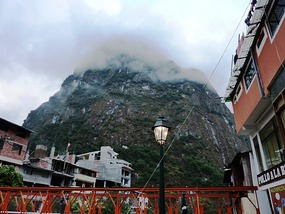
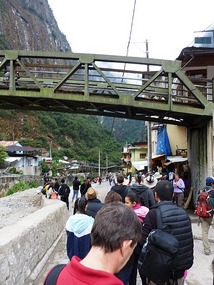
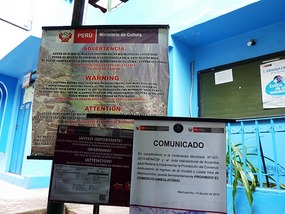

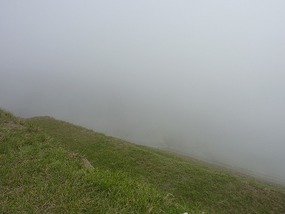
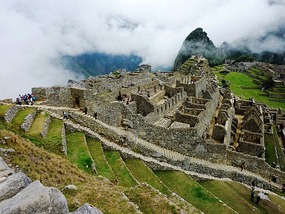
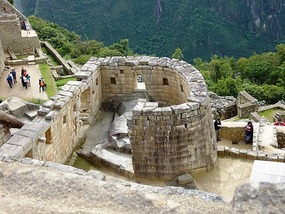
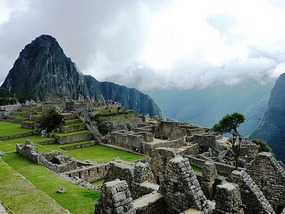
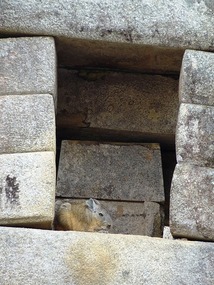
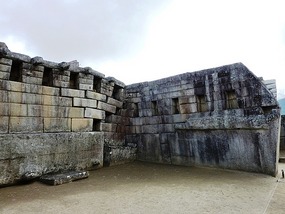
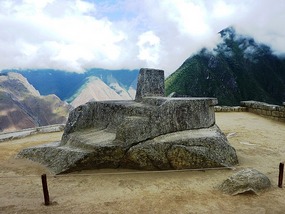
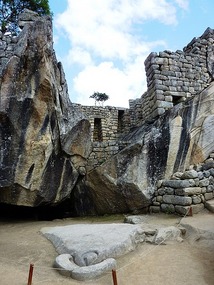

















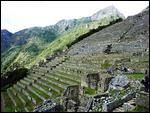
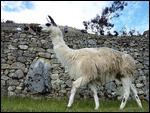
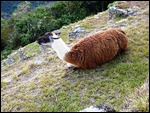
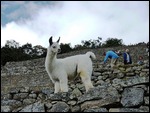
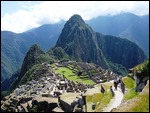
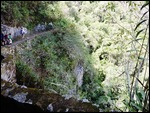
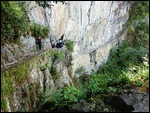
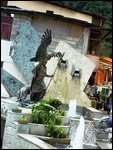
Glenn
2014-08-13
So, now it's on to Easter Island. Say hello to Malcolm Fraser for me.